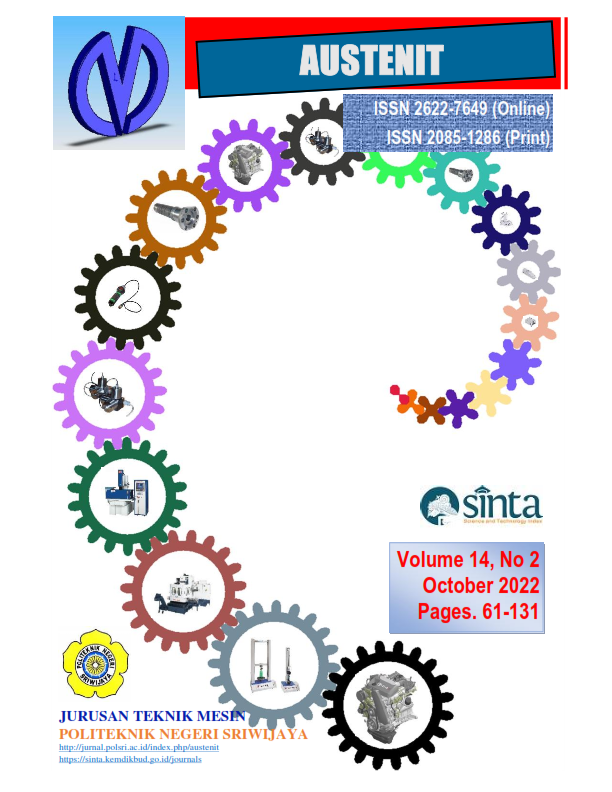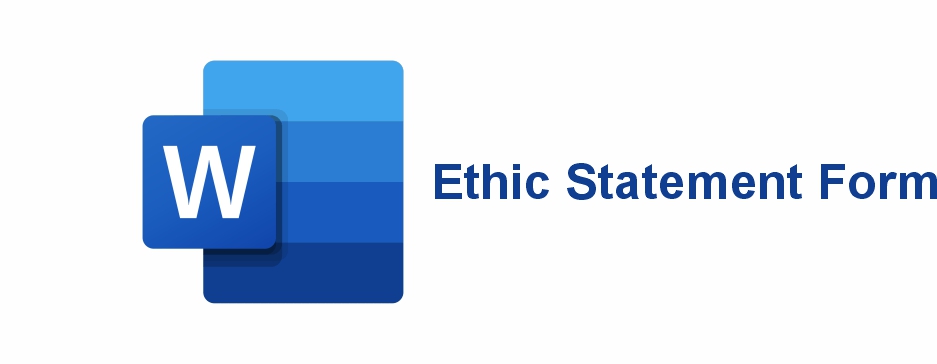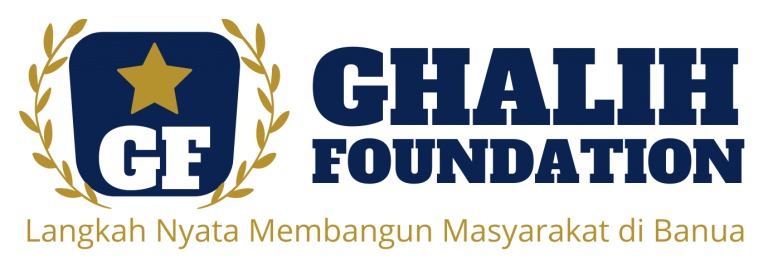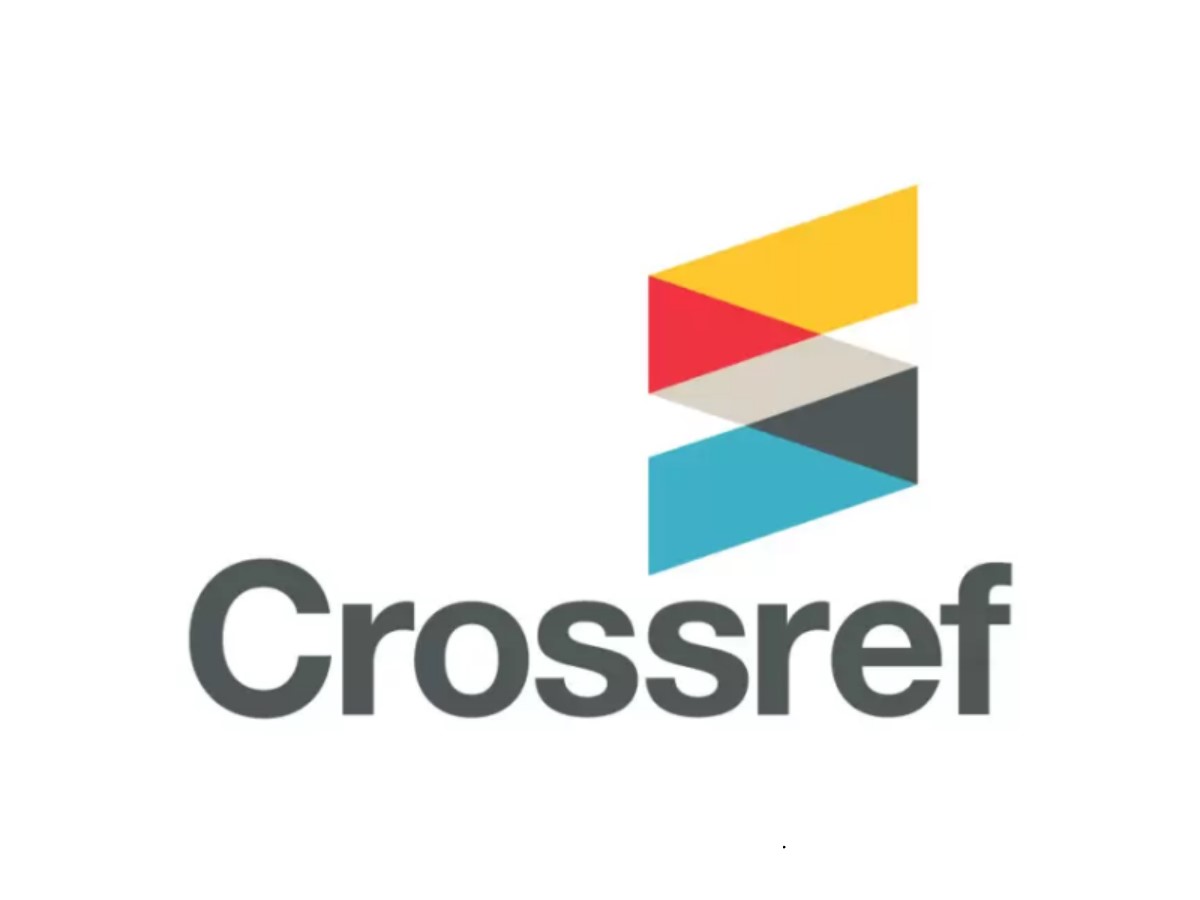THE EFFECT OF CARBURIZING COW BONE CHARCOAL ON THE INCREASE IN HARDNESS OF EGREK PRODUCTS OF BLACKSMITH IN TANJUNG PINANG VILLAGE
DOI:
https://doi.org/10.53893/austenit.v14i2.4922Keywords:
surface hardness, cow bone charcoal, temperature with holding time, pack carburizingAbstract
The egrek must have a tough hardness in the eyes of the egrek, but the craftsman there is criticism by consumers regarding the quality of his sharpness and toughness, therefore. The purpose of this study is to determine the effect of carburizing cow bone charcoal on increasing the egrek hardness of blacksmith products in Tanjung Pinang Village. This research method is a pack carburizing experiment using cow bone charcoal with temperature variations of 850°C, 900 °C, and 950°C and a containment time of 30 minutes, 45 minutes, and 60 minutes. The results of this study prove that the composition of the egrek material of blacksmith products with an elemental carbon value of 0.414% and pack carburizing using cow bone charcoal affects the hardness, the top surface hardness value at a temperature variation of 950°C with a 60-minute containment time of 59.2 HRC. Temperature is very influential in carrying out pack carburizing against the increase in surface hardness.
Downloads
References
Dwiharsanti, M., Sri Jaman, W., Shinta Virdhian. (2018). Analisis Komparatif Tingkat Kekerasan Dan Komposisi Karbon Egrek Antara Produk Lokal Dan Impor Comparative Analysis Hardness LevelAnd Carbon Composition of “egrek†Between Local and Import Product. Metal Indonesia Journal Homepage, 40(2). http://www.jurnalmetal.or.id/index.php/jmi
Ginting, M. (2012). Analisis Peningkatan Kekerasan Baja Amutit Mengunakan Media Pendingin Dromus. Jurnal Austenit Vol 4(01). https://doi.org/10.5281/zenodo.4544285
Hardayanti, I. (2015). Pengaruh Temperatur Austenisasi Dan Waktu Tahan Terhadap Sifat Mekanik, Tebal Scale Dan Struktur Mikro Pada Baja Paduan Ni-Cr-Mo. Jurnal Furnace Vol 1(01). http://jurnal.untirta.ac.id/index.php/jf/article/view/1672
Herman, H., Syakura, A., & Mizhar, S. (2013). Perbaikan Sifat Fisis Dan Mekanis Alat Panen Buah Kelapa Sawit (Egrek dan dodos) Produk Lokal. Jurnal Usu (11). https://jurnal.usu.ac.id/index.php/jddtm/article/view/2007
Juliasti, R., & Pramono, Y.B. (2016). Pemanfaatan Limbah T ulang Kaki Kambing sebagai Sumber Gelatin dengan Perendaman Menggunakan Asam Klorid. Jurnal Aplikasi Teknologi Pangan Vol 4(01). http://jatp.ift.or.id/index.php/jatp/article/view/129
Marpaung, H., & Alfian, Z. (2009). Penggunaan Serbuk Tulang Ayam sebagai Penurun Intensitas Warna Air Gambut. Jurnal RI-USU. http://repositori.usu.ac.id/handle/123456789/34436
Mursal, A. (2020). Investigasi Proses Pembuatan Dan Sifat Mekanik Pisau Pandai Besi Di Desa Tanjung Pinang Kabupaten Ogan Ilir. Jurnal Machinery Vol 2(01). https://doi.org/10.5281/zenodo.4748626
Nasution, R. S., Ariani, F., & Terang, U. H. S. G. (2015). Pengaruh Proses Termomekanik Terhadap Sifat Mekanis Baja Bohler Vcn 150 Untuk Pisau Pemanen Sawit. Jurnal Dinamis Vol 3(3). https://talenta.usu.ac.id/dinamis/article/view/7000
Putri, F., Effendi, S., Sampurno, D., Fadel Gumay, M. (2021). Pengaruh Quenching Media Pendingin Minyak Goreng Bekas Terhadap Kekerasan Baja S45c Yang Telah Di Pack Carburizing. Austenit, 13(2), 28–32. https://doi.org/10.5281/ZENODO.5684057
Siproni, Seprianto, Dicky, & Wilza, R. (2012). Keefektifan Penggunaan Karburiser Arang Tulang Sapi Pada Baja Kadar Karbon Rendah Untuk Pembuatan Alat Pemanen Buah Kelapa Sawit (Dodos Dan Egrek). Prosiding Seminar Nasional Material dan Metalurgi (SENAMM V) http://www.balitbangnovdasumsel.com/riset/834
Sundari, E., Taufikurrahman, T., & Syaputra, M. B. (2019). Pengaruh Variasi Temperatur Pemanasan Terhadap Kekerasan Dan Ketebalan Lapisan Pada Chromizing Baja St 37. Jurnal Austenit Vol 11(2). https://doi.org/10.5281/zenodo.4547813
Wardani, sari, Rosa, E., & Mirdayanti, R. (2020). Pengolahan Limbah Tulang Kambing Sebagai Produk Arang Aktif Menggunakan Proses Aktivasi Kimia dan Fisika. Jurnal Ilmu Lingkungan, 18(1), 67–72. https://doi.org/10.14710/JIL.18.1.67-72
Downloads
Published
How to Cite
Issue
Section
License
Copyright (c) 2022 Authors and Publisher

This work is licensed under a Creative Commons Attribution-ShareAlike 4.0 International License.
The Authors submitting a manuscript do so on the understanding that if accepted for publication, Authors retain copyright and grant the AUSTENIT right of first publication with the work simultaneously licensed under a Creative Commons Attribution-ShareAlike License that allows others to share the work with an acknowledgment of the work's authorship and initial publication in this journal.
AUSTENIT, the Editors and the Advisory International Editorial Board make every effort to ensure that no wrong or misleading data, opinions or statements be published in the journal. In any way, the contents of the articles and advertisements published in AUSTENIT are the sole responsibility of their respective authors and advertisers.














